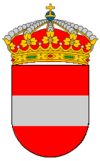Puertollano
| Puertollano | ||
|---|---|---|
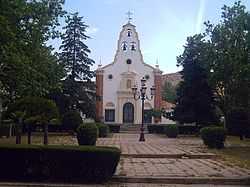 | ||
| ||
 Puertollano | ||
| Coordinates: 38°41′N 4°7′W / 38.683°N 4.117°W | ||
| Country |
| |
| Autonomous Community |
| |
| Province | Ciudad Real | |
| Government | ||
| • Mayor | Joaquín Carlos Hermoso Murillo | |
| Area | ||
| • Total | 226.74 km2 (87.54 sq mi) | |
| Elevation | 708 m (2,323 ft) | |
| Population (2009) | ||
| • Total | 51,842 | |
| • Density | 230/km2 (590/sq mi) | |
| Time zone | CET (UTC+1) | |
| • Summer (DST) | CEST (UTC+2) | |
| Postcode | 13500 | |
| Website | Official website | |
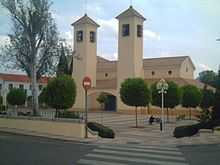
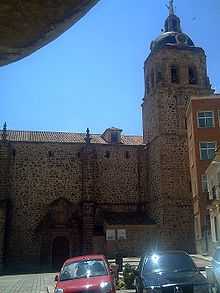

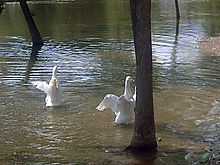
Puertollano is an industrial city in province of Ciudad Real, Castile-La Mancha, Spain. It is situated on the AVE High Speed Train line linking Madrid and Seville (opened 1992). The city has a population of 51,842[1] (2009).
Legend of the lie
The name of Puertollano is a concatenation of "puerto" (pass) and "llano" (flat). It is often said that "Puertollano is the town of two lies" ("Puertollano es el pueblo de las dos mentiras"), because of the polysemy of the Spanish word "puerto", which means both "pass" and "port". People often say that "Puertollano doesn't have a port neither it is flat" ("Puertollano ni tiene puerto, ni es llano"). It is partly built on the slopes of surrounding mountains.
Economy
Puertollano is the largest industrial center in the Castilla-La Mancha region. It was formerly a coal mining town but today only one open-cast mine remains. Nowadays the main industries are petrochemicals (REPSOL), fertilisers (Fertiberia), power generation and, most recently, the manufacture of solar panels. The city has received national and EU aid to diversify its economy after the decline of the coal industry.
History
Archaeological investigations have shown that the area was inhabited in prehistoric times (Homo heidelbergensis and Homo antecessor). Bronze Age weapons have been found and also a Visigoth necropolis from the post-Roman period.
Later the region formed part of the depopulated nomansland between Christian (Northern) Spain and the Moorish Caliphate to the south.
With the Spanish victory at the Battle of Las Navas de Tolosa (1212) the region was reconquered. The authorities encouraged people from northern Spain to settle in the newly-conquered empty lands. Puertollano (then Puertoplano) was founded as a hamlet shortly after. In 1348 however, the Black Death devastated the village, killing all but 13 inhabitants.
Puertollano was granted the status of town (Villa) in the sixteenth century. It continued to grow slowly as a small town specializing in textiles and ceramics until, in 1873, the opening of the coal mines led to a sudden growth in the population. By 1920 the population had reached 20,000 and city (Ciudad) status was granted in 1925 by Alfonso XIII.
Points of interest
The Dehesa Boyal de Puertollano botanical gardens is located in the city.
References
External links
- Official website (Spanish)
